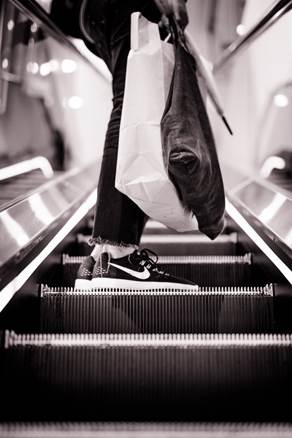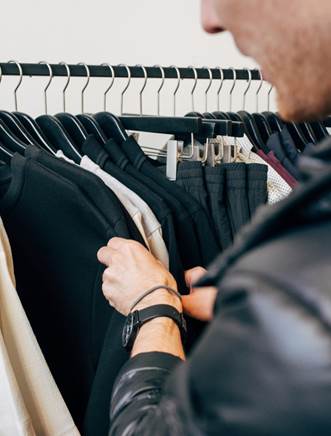As our social climate continuously shifts, so too does the way we dress. Fashion has always been influenced by the conversations circulating the masses, and now is no different. For Gen Z and Millenials, like all preceding generations with youthful influence, the main objective has been breaking previously established social norms. And what better way to do so than through the personal expression afforded to us via fashion.
Breaking social norms
Fashion speaks volumes and today’s looser fits and genderless pieces say quite a bit. The most obvious of which may be the breakdown and restructuring of what it means to be “masculine” vs “feminine” and “male” vs “female”. Rather than being constrained by these pre-conceived definitions, the TikTok and Instagram generations are instead making the decision of erasing the concepts altogether.
Choosing comfort over all else we see instead society seamlessly fusing these notions whilst maintaining a highly stylish aesthetic. Think Harry Styles exuding confidence in a dress or Rihanna looking as sexy in a baggy polo and fitted cap as she does in a tight-fitting dress. Perhaps the recent popularity of street-style clothing coupled with vintage fashion attained through thrift store shopping hauls has helped to secure these styles more prominently in our society.
Historically, clothing has been divided through binary means of categorising. Men’s vs Women's in department stores, e-commerce sites, fashion shows, seasonal collections, etc. And yet, the idea no longer seems suitable when looking towards the future. A recent Vice report found that Gen Z is the most diverse generation out there, with nearly 41 per cent identifying as gender-neutral. According to marketing agency Wunderman Thompson, this has carried over into their shopping habits, with 56 per cent of Gen Z consumers choosing to shop outside their defined gender.
Brands adapt
Start-ups and established brands alike have been observant, as can be seen with the release of labels such as “Gucci MX”, Converse’s genderless line Shape, and Beyonce’s Ivy Park x Adidas collaboration of gender neutral pieces, to name only a few. According to Fashion United, the amount of new unisex products available online has more than doubled over the last year.
Though genderless collections are a start, they do not do much in the way of offering reprieve when one actually shops around. The issue lies with how we classify textiles. There still exists that men’s vs women’s distinction, with pieces, always being presented to the consumer on a binary model, and in specified sections.

“I think about younger people, kids, and teenagers who are interested in exploring the full expanse of their gender identity, who are just going to malls or shopping wherever they are in the suburbs of America and the world over, and everything is just screaming at them that there is this binary: You have to be this or you have to be that, you shop here and you shop there,” says William Defebaugh, the nonbinary founder of Atmos, a magazine dedicated to climate change and environmental issues, in his interview for Vogue. “Today, I feel a bit more comfortable in my shopping experience, but I’ll say that there is a reason it took me 30 years to come into myself and my understanding of myself as being nonbinary.”
In 2017, Browns, the British luxury department store, led the way for retailers by opening its first genderless space, which was also entirely merchandised on genderless models. There were many reasons for the company to launch its brick-and-mortar retail space, says buying director Ida Petersson to Vogue. The main one, it seemed, showed to be data depicting customers shopping across the binary gender divide.
“It felt really right to put it forward as a more gender-neutral store where you take away some of that tension that some people have because they are stuck shopping in one section,” Petersson says. The result becomes a space separated into installations, where a Gucci collection can live side by side with a Balenciaga one, and each one featuring both men’s and women’s pieces seamlessly; beautifully undefined which is which.
Additional benefits
The concept of gender-neutral clothing not only supports one's fluid identity, but also sustainable measures to produce less and keep clothes in use for longer. As the confines that define how we dress are redefined by our definition of gender norms, each textile suddenly has double the amount of consumers it previously did.
“Shopping has an impact on people,” Defebaugh concludes. “Fashion’s purpose is for self-expression, and so the idea that this force or this energy that we call fashion has become in some ways oppressive for people’s understanding of their own gender in how we market it, it’s really quite ridiculous. Fashion should be the opposite: It should be a force for liberation.”

As I sit writing this, on a quaint corner on Macdougal street, a woman walks by in baggy jeans and an oversized button-down. Directly behind her struts a muscular man in a tightly fitted dress, heels, and a bedazzled mask that reads “Queen”. As always, the liberation Defebaugh speaks of has already begun amongst the bold who historically have set out to redefine the status quo. The question moving forward is for brands, and how much longer it will take them to adapt.
This article has not been edited by Fibre2Fashion staff and is re-published with permission from synzenbe.com










Comments